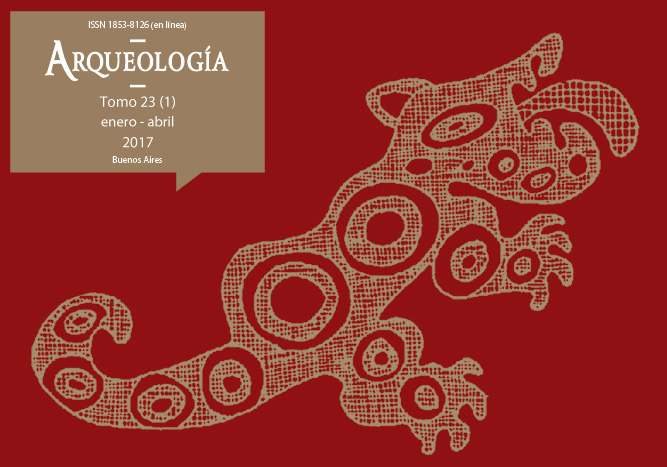Archaeometric studies of nails of funeral context from San Francisco ruins (Mendoza, Argentina)
Keywords:
Archaeological nail, Metallography, Spongy steel, Wrought steel, EDS
Abstract
The metallic elements found in the colonial funeral contexts generates data that allows us to establish the chronology of manufacture and the possible origin of the raw materials used. In this case, we will apply archaeometric studies to the nail-like items uncovered as part of the funeral contexts registered at the Ruinas de San Francisco site (a 17th to 18th Century Jesuit temple) in the city of Mendoza. The aim of this article, is to answer questions related to their production process, including technology, manufacture and the raw material involved in their elaboration. For this reason, it was important to determine the spatial distribution and stratigraphy of the nail-like items and their contextual relationship to the human burials we registered. Likewise, the production techniques and the chronology of the analyzed elements were established using metallographic analysis, this allowed us to check whether there was any degree of re-use of these items during the period under consideration here.Downloads
Download data is not yet available.
How to Cite
Quiroga, M., Chiavazza, H., Lascalea, G., & Gurrito, M. (1). Archaeometric studies of nails of funeral context from San Francisco ruins (Mendoza, Argentina). Arqueología, 23(1), 45-60. https://doi.org/10.34096/arqueologia.t23.n1.3657
Section
Articles
Authors who publish in this journal agree to the following conditions:
- Authors retain copyright and yield to the journal right of first publication with the work registered with attribution license Creative Commons, which allows third parties to use the published always mentioning the authorship of the work and first publication in this magazine.
- Authors can make other independent and additional contractual arrangements for the non-exclusive distribution of the version of the article published in this issue (p. Eg., Inclusion in an institutional repository or publish it in a book), provided that clearly indicate that the work was published for the first time in this magazine.
- It allows and encourages the author / s to publish their work online (eg institutional or personal pages) before and during the process of revision and publication, as it can lead to productive exchanges and greater and more rapid dissemination of work published (See The Effect of Open Access).





(1)13.png)






1.jpg)
1.jpg)


13.png)
1.png)


(1)1.png)









